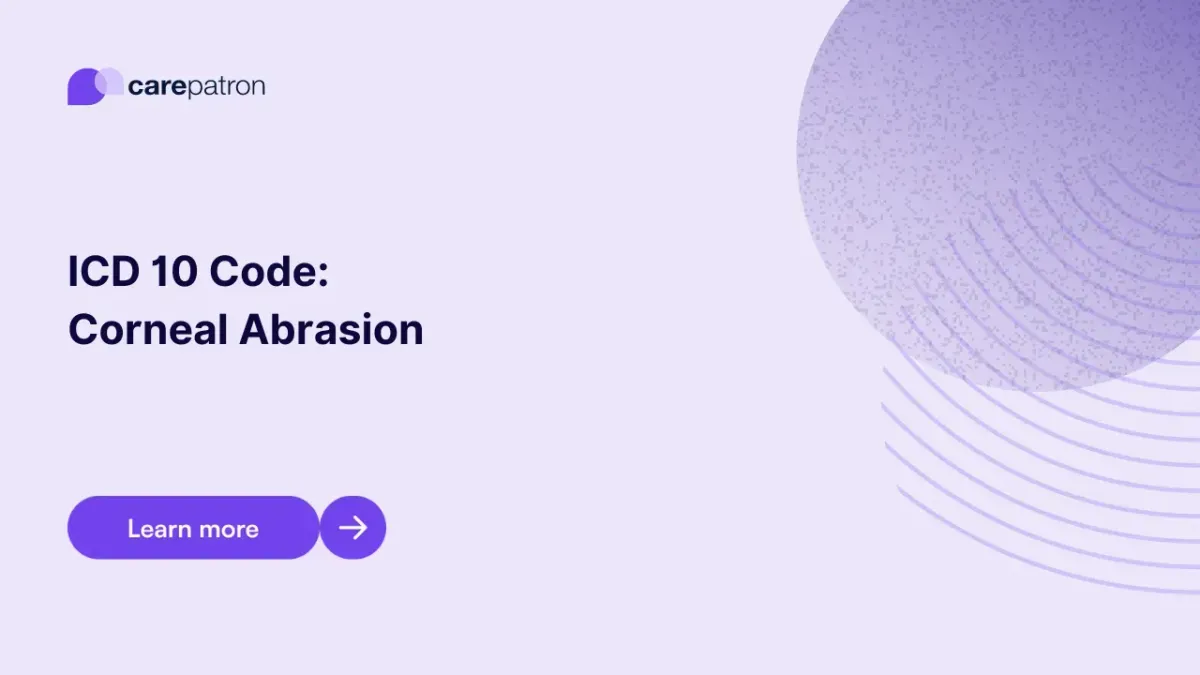
Corneal Abrasion ICD-10-CM Codes | 2023
Read this short guide to learn about Corneal Abrasion ICD codes you can use!
Use Code
Commonly asked questions
They will conduct an eye exam that uses a special dye called fluorescein, which fills any breaks caused by the abrasion. They will also check for any potential foreign bodies in the eyelids.
They will use antibiotic eyedrops such as ciprofloxacin and moxifloxacin. They might also use erythromycin ointment.
They might also insert a bandage contact lens to help the abrasion heal and lessen the potential pain caused by blinking.
They should recover in one to two days because cornea cells reproduce quickly. Larger abrasions can take longer,
EHR and practice management software
Get started for free
*No credit card required
Free
$0/usd
Unlimited clients
Telehealth
1GB of storage
Client portal text
Automated billing and online payments
